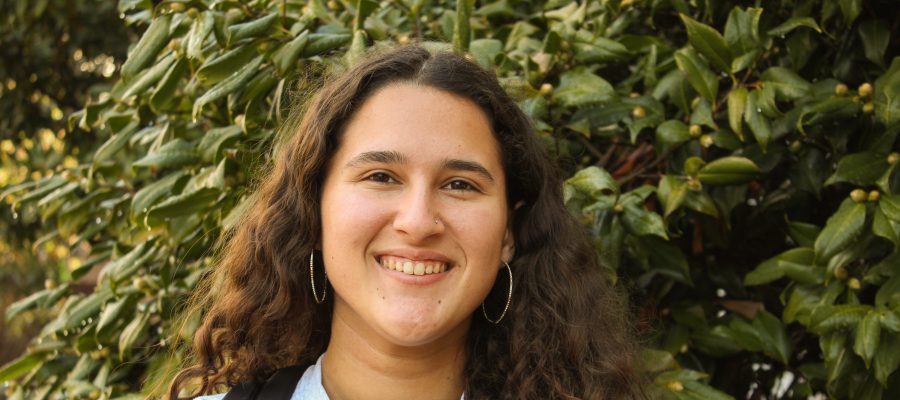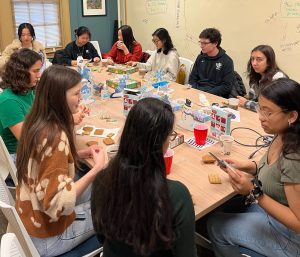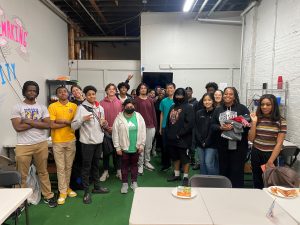Bridging Communities through Baltimore First: A Conversation with Amanda Ferber

By: Sierra Romero
 “Baltimore First opened my eyes to the different realities that people in America have,” says Johns Hopkins University student Amanda Ferber. “Sometimes we got a little off topic and played games and told stories, but I feel like those moments are sort of the point of the program; to learn to build community with people outside of campus and integrate yourself within Baltimore.”
“Baltimore First opened my eyes to the different realities that people in America have,” says Johns Hopkins University student Amanda Ferber. “Sometimes we got a little off topic and played games and told stories, but I feel like those moments are sort of the point of the program; to learn to build community with people outside of campus and integrate yourself within Baltimore.”
At its core, Baltimore First epitomizes sustainable service and creating bonds between students and their designated service partners for an entire semester. In addition to weekly volunteering, Baltimore First members attend educational workshops to learn about ethical volunteering. All Baltimore First members participate in an orientation to understand what the Center for Social Concern aims to do and how the program fits into the office’s mission. Alongside this, students participate in occasional critical reflection sessions post-volunteering, cohort socials, and Baltimore-based community events.
Learn more about the program from one of Baltimore First’s student directors, Amanda Ferber.
Amanda’s Introduction to Baltimore First
Reflecting on her freshman year, Amanda recounted how a social policy class stirred her curiosity about life beyond academia and in Baltimore City. This prompted her to join Baltimore First. Amanda was originally matched with Cornerstone Community Housing, a nonprofit organization offering transitional housing for men having been released from incarceration or rehabilitation. While here, Amanda and her peers provided technology literacy coaching to men. Baltimore First volunteers would create a curriculum and teach entry-level basic programs such as keyboarding, internet browsing, word processing, and emailing.
Beyond sharing technical skills, these sessions became an opportunity for human connection, fostering camaraderie, and mutual empowerment. Baltimore First is meant to transcend beyond weekly volunteering and create a space for connection, learning, and other immersive experiences that encourage personal growth.
Taking Initiative
As the semester continued, Amanda began to reflect on the sense of community being created and was inspired to add to it. “The men told me about their experiences with substance use disorder and how they are using their lived experience to become certified peer recovery coaches,” she recounted. “My classmate in the Computer Science department and I were thinking, what if we made an app to create a digital environment for peer recovery supporters and their peers to interact with each other and communicate and set goals?” This ambitious undertaking propelled Amanda into the realm of human-centered design and problem-solving, fundamentally reshaping her collegiate trajectory. The app is still being developed by the two.
As Amanda’s involvement with Baltimore First deepened, so did her leadership role. She took on responsibilities as a student director the following fall semester. “It’s been perspective shaping because I’ve learned how to create workflows, implement change, have oversight, and work with my other Student Directors,” said Amanda. In this role, she’s been able to help steer the program’s direction, ensure its sustainability, and prioritize accessibility and engagement for all students, regardless of background or availability.
What to Expect Joining Baltimore First

Baltimore first is a semester-long commitment to volunteer weekly. Each student will be paired with a community partner across Baltimore based on scheduling availability. This year, Baltimore First partnered with five organizations across the city: Cornerstone Community Housing, Baltimore Green Space, Corner Team Inc., St. Francis Neighborhood Center, and Paul’s Place.
At Baltimore Green Space, students helped revitalize stewardship efforts at local green spaces to promote a healthy environment. While at Corner Team, Inc., students served as “Learning Coaches” to Baltimore City students in their Youth Champions after-school program. At St. Francis Neighborhood Center, the oldest neighborhood center committed to ending generational poverty, students supported the Power Project, an after-school program for Baltimore City students. Students who volunteered at Paul’s Place supported meal services and served lunch and dinner to guests in southwest Baltimore. As a group, all students will travel to their partner sites and take part in community-identified tasks and needs. Transportation is provided by the Center for Social Concern.
For Amanda, the program transcends being a mere volunteer initiative; it serves as a place for personal growth, a place to make lifelong connections, and an opportunity to contribute to the work being done by organizations in Baltimore City.
